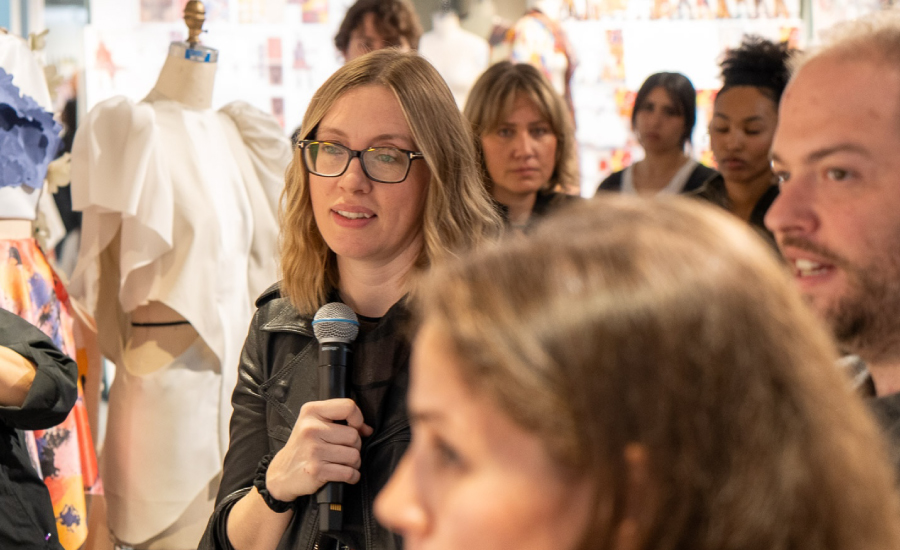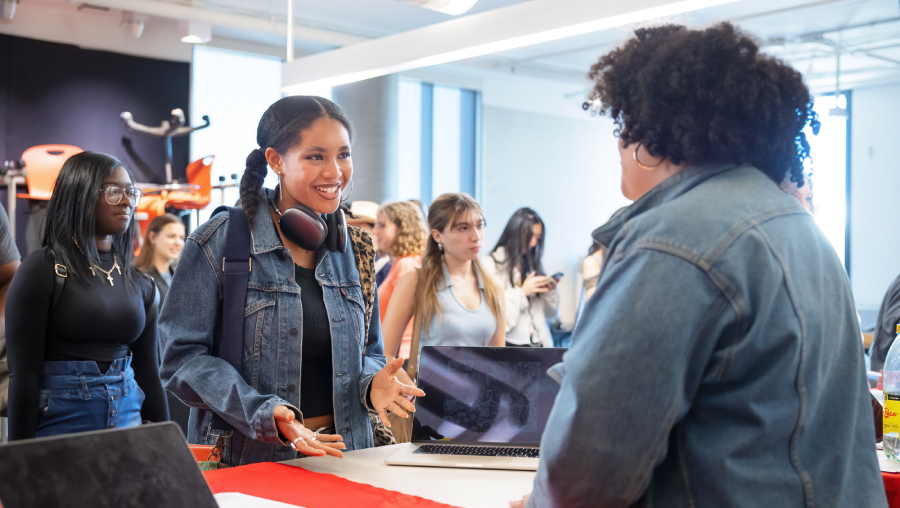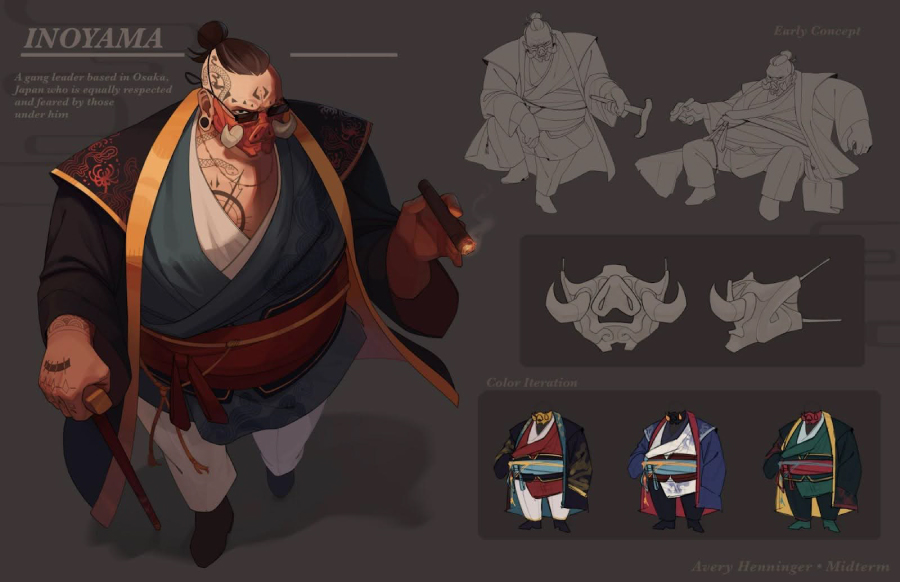Netflix x Otis Access Student Kayla Mitchell on How Feedback Prepares Her for a Professional Career
The entertainment marketing program co-created by Netflix and Otis College recently graduated its first class.
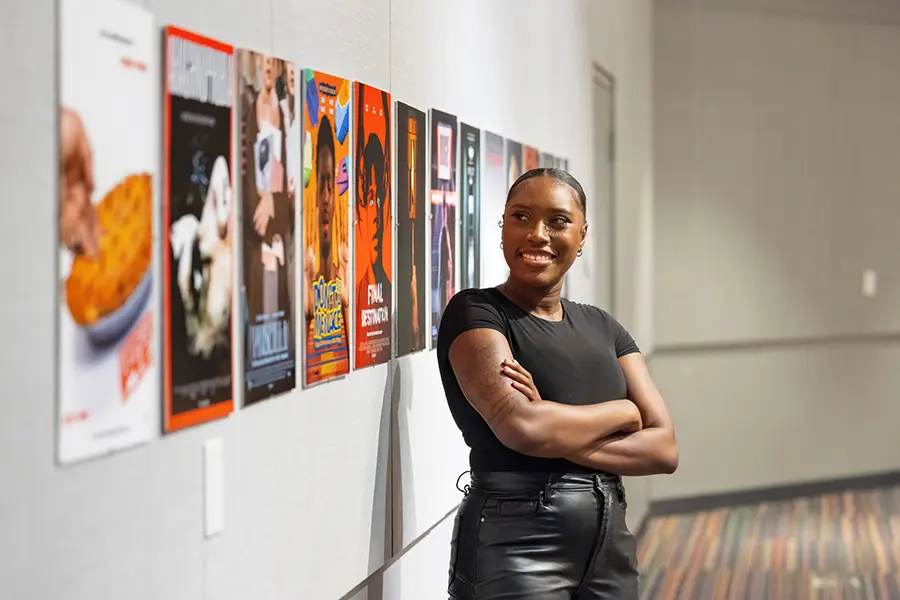
The Netflix x Otis Access program was launched in September 2023 to give underrepresented students a leg up in exciting careers in entertainment. Bringing together the expertise of Otis instructors and professionals across the entertainment industry, the 20-month career preparation program teaches students the basic skills required for entry-level jobs in entertainment marketing, with courses like Introduction to Trailer Editing and Writing for Visual Communication. The program culminates in a six-month paid apprenticeship at one of Netflix’s creative agency partners.
In addition to learning hard skills, the program also introduces students to the soft skills of interpersonal communication that is as necessary for career success as software and technical know-how. A key component of this education is feedback.
Experiencing feedback in a safe, constructive environment is essential for job preparation, says Dawn Baillie (’86 BFA Communication Arts, Illustration), a co-owner of the creative agency BLT Communications who was a key part of designing the Netflix x Otis Access program. “We need there to be an understanding of how to deal with criticism, how to improve the work using the criticism, and how to have the tenacity to stay on a project when somebody’s required you to do 35 revisions on something,” she says, “because that’s what we have to do… We get an assignment, we have a script. We’re getting revisions and criticisms continually. And you might have to work on the same thing 30, 40 times. So you have to have the fortitude to be able to withstand that.”
Kayla Mitchell recently completed the Netflix x Otis Access program, and can vouch for how feedback has helped her develop the skills needed for entry into the entertainment marketing job marketplace. She wrote about her experience in the program.
As I near the end of my time in the Netflix x Otis Access program, I’ve been reflecting on how much my perspective on feedback has changed since I started. From the very first term, the program has emphasized the importance of feedback in the creative process. Now, with each project and professional experience, I’m getting a clearer picture of what this looks like in the real world and how essential it is for growth.
One of the earliest moments that shaped my understanding came during our Introduction to Graphic Design course with instructor Cheryl Savala. We had the incredible opportunity to present our midterm project that focused on title treatments to Luis Sola, a highly respected logo and typography designer from BLT Communications.
For many of us, myself included, this was a completely new experience. I didn’t know what to expect. After we presented, we each had about 10 minutes to hear Luis’s thoughts on our work, and it was eye-opening. While hearing what could be improved wasn’t always easy, I knew it was something that I would have to get used to. It was clear that this process wasn’t about tearing us down. Instead, it was about helping us push our work to the next level. This is a reality that will follow us throughout our careers.
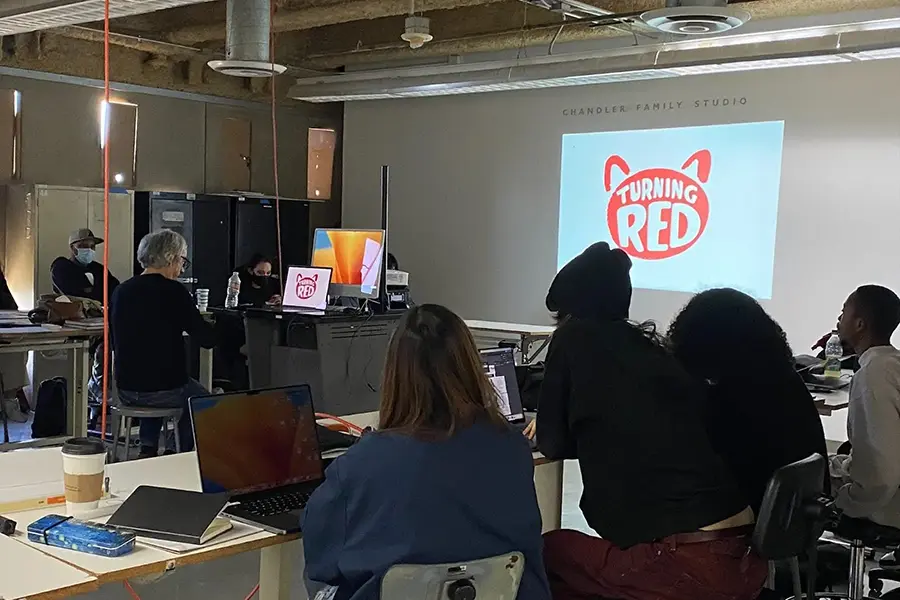
During my time at BLT, I gained valuable insights from the design staff, learning techniques for adjusting color and lighting. These adjustments helped create a more seamless composition that aligned better with the dark and suspenseful atmosphere of the show You that we were illustrating.
Throughout my design journey, I’ve gained a deeper understanding of essential design elements like font, color, and composition. I learned that colors often convey specific genres. For example, red typography commonly indicates the film is a comedy. Additionally, applying the rule of thirds in layout design has helped me create balanced and visually compelling compositions by dividing the design into thirds both horizontally and vertically. This guides the viewer’s focus and ensures the most important elements are placed strategically within the design.
Fast forward to our final term: We had the chance to receive feedback from Todd Heughens, former SVP of Print Design at FX Networks, during our Professional feedbacks course taught by Tom Morrisey. One of Todd’s most notable projects is his work on the American Horror Story franchise. With his extremely successful background, I knew that his insights were going to be invaluable.
During the session, he didn’t just feedback our posters, he shared what caught his attention and what needed to be improved to bring the designs to a professional level. His approach to feedback was very intentional and it opened my eyes to how important these types of opportunities are. His feedback was a reminder that even the smallest details matter and that there’s always room to grow.
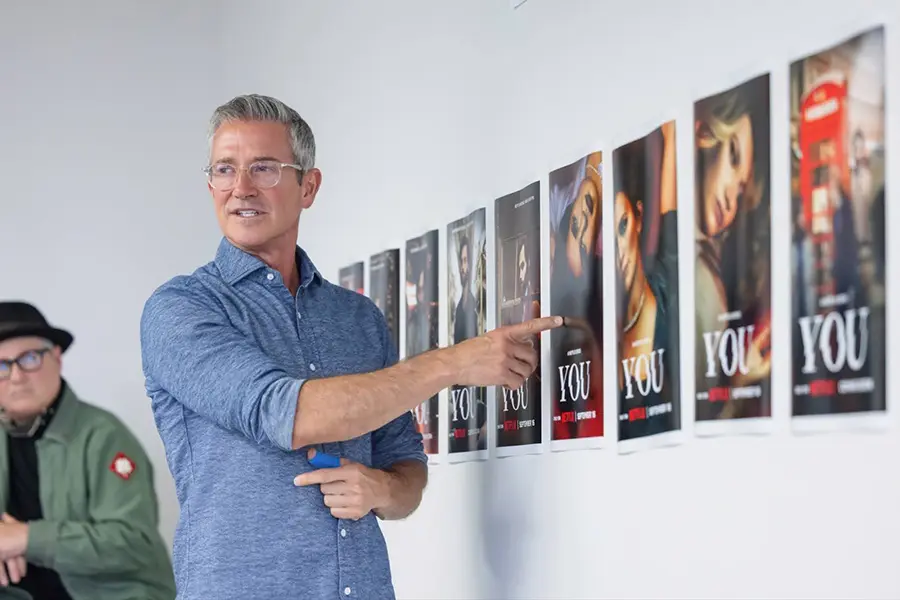
We visited BLT Communications for a hands-on feedback session. This was an exciting opportunity to apply the feedback we’d already received and take our work further. At the agency, we worked independently on our poster projects while members of the BLT staff met with us one-on-one. By the end of the day, the energy in the room was incredible. Everyone was proud of their progress, and we all left with a sense of accomplishment. It felt like a real glimpse into what working—and workflow—in the industry looks like.
The idea of feedback used to make me uneasy. The word itself can feel negative. However, the Access program has taught me that feedback isn’t about pointing out what’s wrong but about unlocking potential. One of the most valuable lessons has been understanding that feedback is part of the job. With each project I’m learning to take feedback in stride, adjust my approach, and come out stronger on the other side.
On Thursdays, we worked with creative executive Neisha Tweed Bell, who facilitates workshops in our Growth and Guidance Course, to better understand how to navigate feedback. These sessions have been a game-changer.
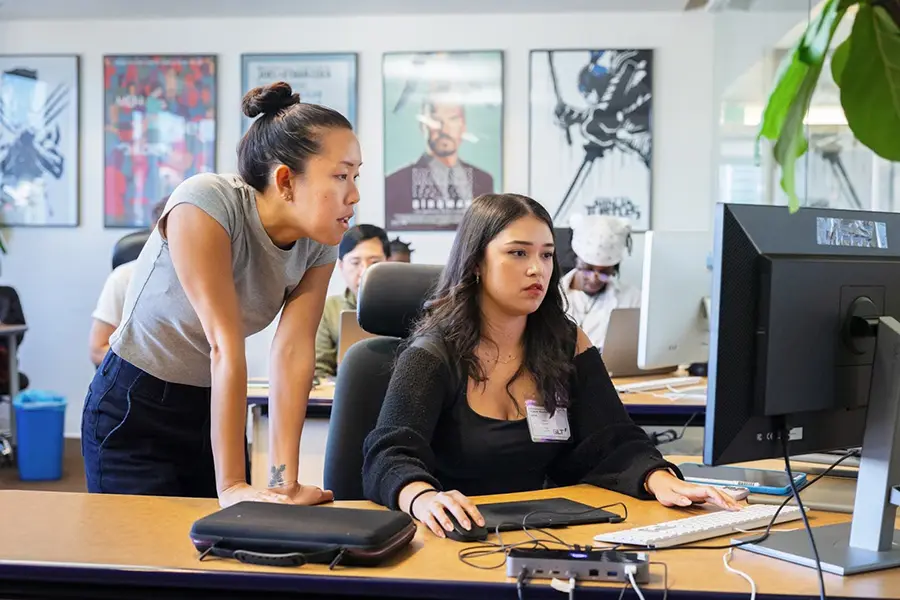
Neisha has emphasized the importance of listening and responding professionally, even when we don’t necessarily agree with the feedback. By approaching feedback with an open mind and a positive attitude, I’ve found that I’m not just improving my designs but I’m building resilience and setting myself up for long-term success.
As I prepare to step into the professional world, I’m grateful for these experiences. They’ve helped me develop not only as a designer but as someone who can take feedback and use it to grow. The skills I’ve gained in this program will stay with me far beyond the classroom, shaping my creative journey for years to come.
Ultimately, students in the Access program have learned the importance of separating themselves from their artwork and using a feedback as a way to elevate. As students approach the apprenticeship part of the program, they are getting a deeper understanding of what a typical day at an agency may look like. Receiving feedback and feedback will be one of the most prominent parts of the job. Students in the Access program will be more than prepared to flourish in the competitive world of entertainment marketing.
Related News
